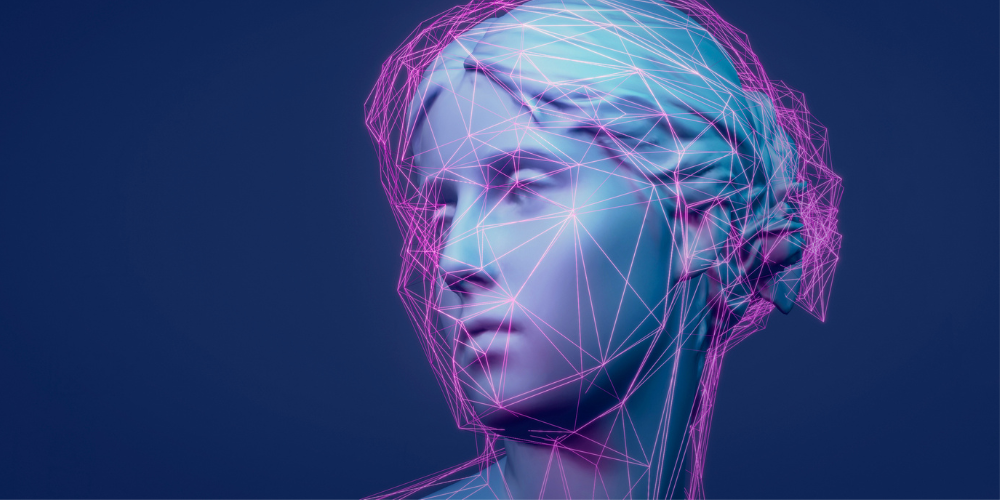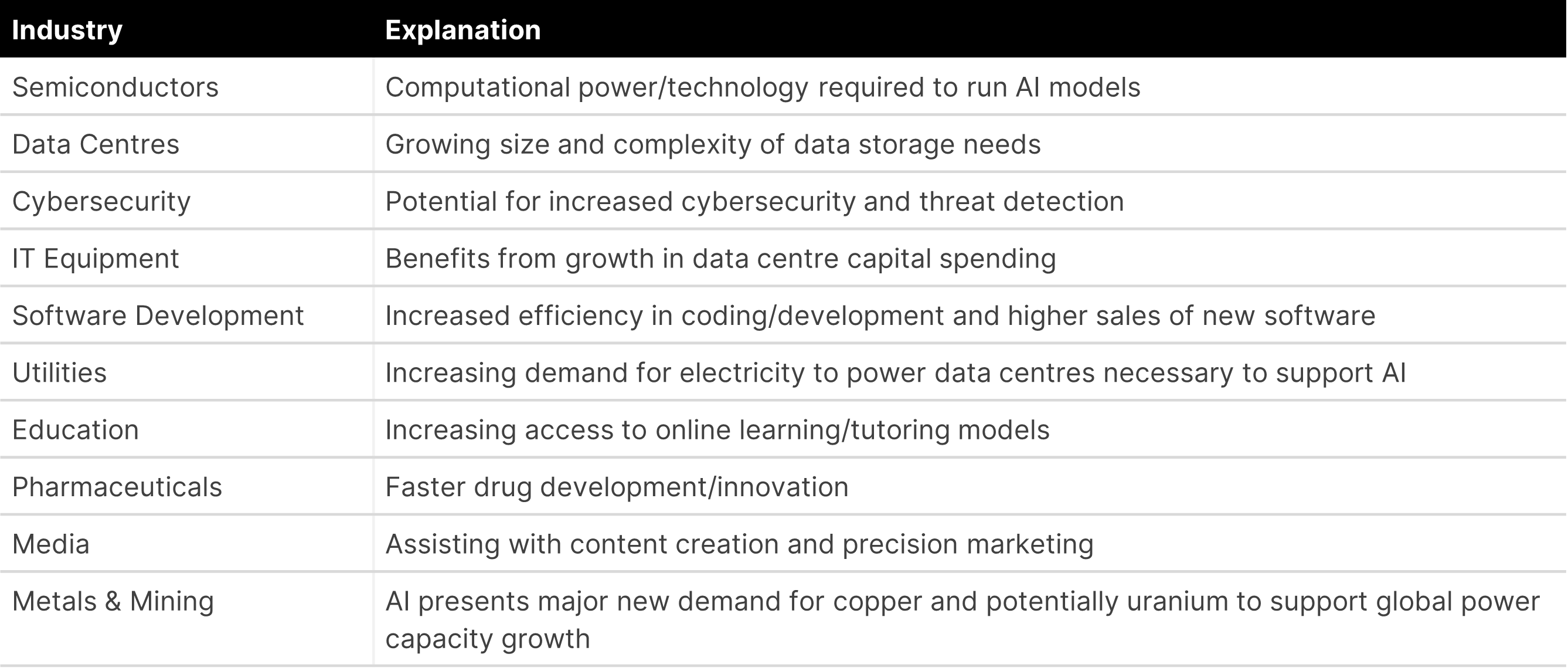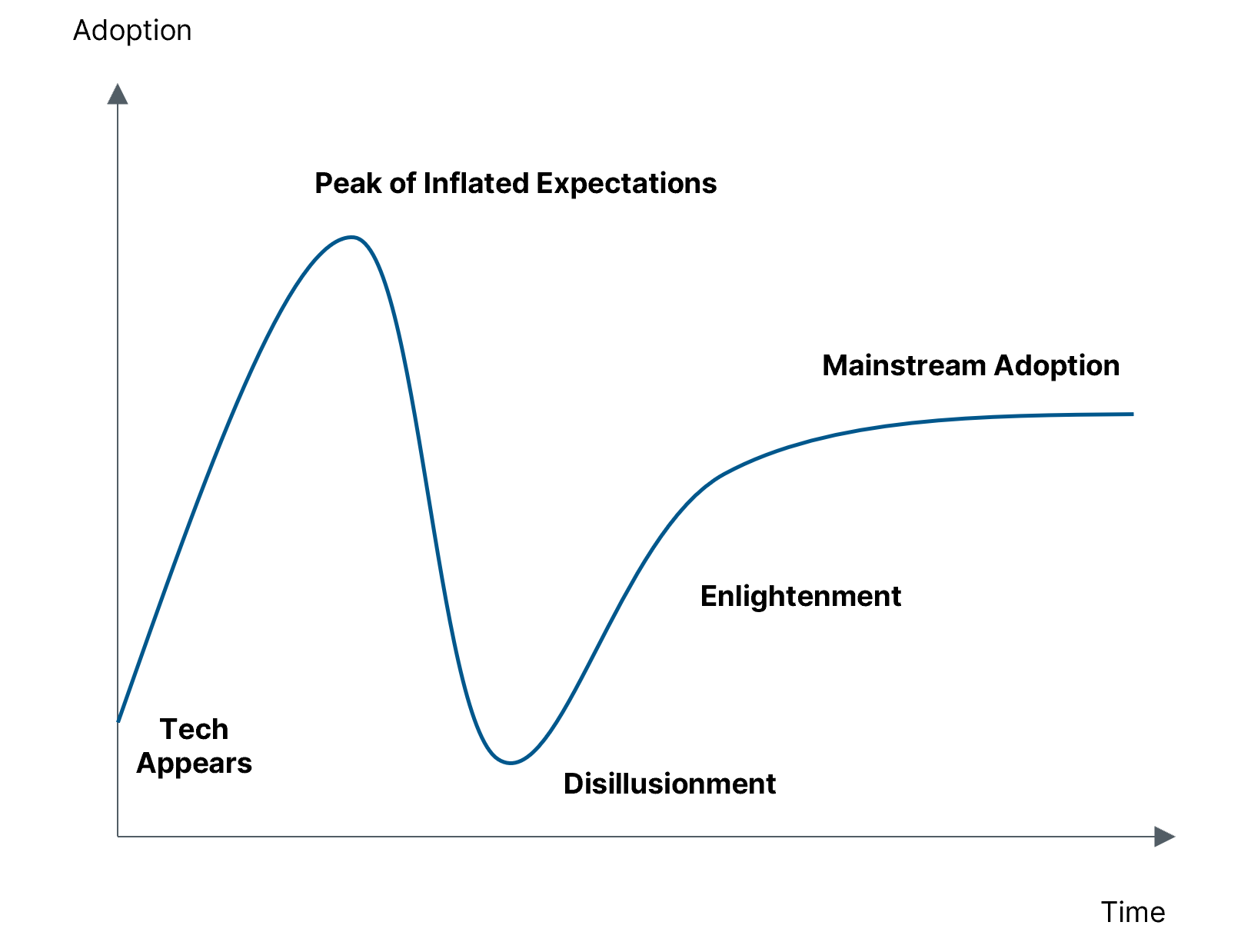The “Sudden” Rise of Artificial Intelligence (AI)
Stu Morrow, CFA | Mawer Investment Counsellor
Welcome to the age of algorithms! In addition to filtering your social media feeds and deciding which videos to serve you, these digital neural networks can drive cars, recognize faces and objects, generate visual art, “quick compose” your email responses, and now write seemingly anything from job postings to movie scripts—even code—all from a simple prompt. If AI seemed like a vague tech concept to the average person before, OpenAI’s launch of ChatGPT in 2022 has accelerated its hype and relevance to every corner of society, prompting much speculation, prediction, and evangelizing around its implications and potential.
As an investment theme, it is a big one, and one we’re watching closely. The current application of AI across different industries, sectors, and business models already demands close consideration from investors—for what it poses in terms of opportunity and risk today, and at both the micro and macro level over the long term—and what we’ll explore further in this article.
How Does AI Work, Again?
Just as our brains help us think, learn, and solve problems, AI helps computers do the same with algorithms. Algorithms are essentially sets of instructions for how a computer should process information, find underlying relationships within that data, and come to a solution.
It’s worth reiterating that AI is not entirely new. AI was originally founded as an academic discipline in 1955; it is as old as the first digital computer. The seemingly “sudden” appearance of ChatGPT is, in fact, the result of a typical pattern most emerging technologies follow over time: a gradual convergence of cost reductions, performance improvements, and network effects.
Notable Applications of AI
A growing number of companies across different sectors have started investing in AI capabilities to improve internal processes, reduce time spent on administrative tasks, and accelerate innovation. Most AI investments to date have occurred in the infrastructure sector which has benefitted semiconductor companies, equipment manufacturers, along with hardware and networking equipment companies. Some notable application examples include:
Semiconductors
The emergence of generative AI has been a strong revenue driver for semiconductors and semiconductor equipment manufacturers, given an increase in the computational requirements for AI models.
Information Technology Hardware and Networking
Companies in the information technology hardware industry are benefitting from incremental infrastructure, including equipment and data center buildouts.
AI’s Economic Potential—And Cost
While there have been some early good news stories related to AI deployment, estimates for the long-term global economic impact of AI vary based on different assumptions for adoption rates. (More on where we’re potentially at in the adoption cycle, later.) Given the general bullish sentiment around its potential, the current economic predictions around AI are rather grand in scale:
- That AI could potentially contribute up to $15.7 trillion USD to the global economy by 2030.1
- Over time, generative AI has the potential to add the equivalent of a UK-sized economy ($2.6 to $4.4 trillion) to global GDP, mostly across customer operations, marketing and sales, software engineering and R&D functions.2
- That AI could add almost 2% to Canada’s GDP. In other words, almost 2x its real GDP in 2023.3
Why such big numbers? The main value proposition for AI is productivity enhancement, i.e., that we can create and do more with fewer resources. Still, this ideal upside comes with significant upfront costs. Take, for instance, the ongoing capital spending required by tech giants such as Microsoft, Meta, Google, Amazon, and Tesla, which have collectively invested over $50 billion in AI infrastructure during the first quarter of 2024 alone. These companies have projected their combined capital spending for 2024 may approach $200 billion, representing material year-over-year percentage increases in capital spending budgets.
Outside of the big tech firms, companies must upgrade their own hardware and spend money to structure their data to help train AI models while ensuring data privacy. Public and private spending on upgrading power grids is also needed to support the anticipated demand for electricity to power AI models.
So, while the speed of consumer adoption of AI tools such as ChatGPT has been impressive, full-scale corporate adoption might be somewhat slower given the required upfront costs. While we do believe AI’s potential value-add to many companies is compelling, if the cost that comes with implementation and delivery is higher than the value it can create for the business, companies may choose to significantly reduce or pull away completely from investing in it. Not all technological trends, however promising, are immediately adopted.
For example, since the industrial revolution, the world has been on a trend towards complete factory automation. But we are now ~250 years on, and many manufacturing processes still require manual labour, due in large part to how the cost to automate can be even higher than employing people. Those undeniably high capital costs limit its use case (in spite of its proposed value) and the general global penetration rate of automating equipment. Even Amazon’s high-tech distribution process still requires thousands of workers.
In summary, the business case for delivering various AI solutions must draw a line where the cost of the solution is higher than the value proposition. Given the current reality of high implementation costs, it’s likely we are at the earlier stages of a longer-term productivity cycle.
Potential Downside Risks to Global AI Adoption
It’s also worth noting, too, that while there are many touted benefits of AI, the potential risks and implications are not insignificant:
Environment
AI requires a significant amount of energy and water usage to handle its massive computing power. Training an AI model creates over 57 times more carbon emissions than a human generates in a year.4 As AI adoption rates increase, the environmental impact might be a headwind to expected adoption rates.
Copyright and Privacy
On the governance side, there are ongoing court challenges related to copyright law violations given that a large amount of content was sourced from the internet to train AI models, such as ChatGPT. Copyright infringement is an overhang likely to play out over the coming years. Considering privacy and security, it’s possible that regulatory frameworks will be implemented to ensure a degree of consumer protection, which may also slow adoption rates. Furthermore, large language models like ChatGPT have generated output that at times doesn’t make any sense. These episodes are known as “hallucinations,” which are not without potential fixes, but they may reduce the reliability of the AI tool, at least initially.
Labour Displacement
From a societal perspective, it is likely that a portion of the global workforce will be displaced as AI adoption becomes more mainstream. Jobs that involve routine and repetitive tasks are particularly vulnerable to disruption. To help alleviate some of that displacement, the public and private sector need to be prepared to re-skill impacted workers into other fields, perhaps into AI support. Interestingly, AI hallucinations may be one area where human oversight is required.
That being said, history suggests that presuming doomsday scenarios for workers is somewhat misplaced thinking. Change is inevitable, and yes, the knock-on effects are impossible to predict or draw out; still, while jobs will likely be eliminated due to AI, it’s also possible many others will be augmented, and a great number of new jobs created—particularly if AI potentially leads us into the Fifth Industrial Revolution.
Are We Entering the Fifth Industrial Revolution?
Looking at the longer-term picture of technological progress, it is possible that AI will lead us into a Fifth Industrial Revolution, categorized by the collaboration between humans and machines, and built on the foundations of prior revolutions (see Exhibit 1).5
As a quick reminder, in modern history, The Industrial Revolution began in the 1800s in Great Britain with the invention of the steam engine. Countries, continents, and industries were impacted in different ways throughout that period. And over the next two hundred years, we have continued to see the adoption rate of technology steadily increase and transform culture, society, and the global economy. At such scales, the long-term outcomes and widespread impacts—or the relative "winners” and “losers” from such catalysts—cannot be predicted.




